 Your new post is loading...
 Your new post is loading...
Ads used to just be ads. They were signs on the side of the road, or in our browsers. They were something that could be ignored. Visually loud, sure, but they weren’t a fundamental part of our conversations, relationships, or entertainment. But on the internet today, ads aren’t just part of the content or interface, they are the content and the interface. From what photos you see on Facebook, to the music you listen to on Spotify, to the videos you watch on Snapchat–it’s all served by algorithms that have quantified your response well enough to exploit your tastes, showing you things that you will almost certainly click on. By using these apps and services, we’re feeding the companies that control them immense amounts of data that, in turn, tailors the medium to fit our tastes. The difference between an ad and a piece of content, these days, is becoming technical. It’s an insight that echoes throughout Mary Meeker’s 2017 Internet Trends report, which she and Kleiner Perkins Caufield & Byers published yesterday afternoon. The report, which is heavily anticipated every year, contains hundreds of slides breaking down digital culture and business–everything from emerging markets in China to the rise of unboxing culture. But the trend that stuck out most to us this year? That the internet is now playing every user in one giant game we cannot escape. Here’s how....
“Will artificial intelligence replace marketers in the near future?” This is the compelling question posted by Loren McDonald of IBM Watson Marketing. Think about all the structured, repetitive and rules based tasks you might do on a regular basis as part of your job as a marketer. They are all open to being completed by an AI service. Not only could they be completed by a computer, but they could be done faster and with fewer errors. That could free marketers up to spend time on managing even more programs without additional staff. Now, if you’re wondering what roles and tasks are at risk, Loren shared this list: - Easily repeatable - Data-centric - Tasks that improve with learning - Rules drive tasks - Reporting - Customer and segment analysis - Campaign automation - Media buying - Campaign testing...
...Marketing automation platforms save time, improve efficiency, increase productivity, and help manage big data. They give companies unprecedented abilities to understand buyers, identify opportunities, track campaign performance, and link marketing activities to business outcomes.
But they do not provide insight into the billions of bits of data being created as consumers move from screen to screen and interact online and offline with brands. According to IBM, 90 percent of all data in the world is less than two years old. Humans are not programmed to keep up. And yet, turning data into intelligence, intelligence into strategy, and strategy into action remains largely human powered.
What inevitably comes next are marketing intelligence engines that process data and recommend actions to improve performance based on probabilities of success. Think about it. Are we really that far off from an automated marketing strategy in which the marketer's primary role is to curate and enhance algorithm-based recommendations rather than to devise them?...
...like thousands of other words and phrases, it has many definitions including “a psychological phenomenon where people assume the actions of others reflect correct behavior for a given situation.” However, in our world of marketing and advertising, it means something completely different and according to Aileen Lee, partner at venture firm Kleiner Perkins Caufield & Byers, “In the age of the social web, social proof is the new marketing.”
Basically if someone else has done it or used it and talked about it online, that’s social proof. As a B2B or B2C company, how do you go about getting people to talk about you or your product? And more importantly what do you do with that social proof once you get it?...
Digital marketing offers greater opportunities for businesses over the next year than more traditional channels, according to a new report.
When asked to identify which three marketing channels offer the greatest opportunities, half of brands (50%) mentioned social media followed by email (43%) and websites (35%).In fact the top 10 most cited channels are all online, with the most popular offline channel being direct mail at 8%....
A landing page is just the page someone “lands on” when an ad or email directs them to take a specific action such as sign up for a free webinar, subscribe to a newsletter, download free videos or buy a new product. The landing page is used instead a site’s homepage.
Effective landing pages make it very clear what a visitor is going to get from a page and how to get it. That’s it plain and simple. They don’t have links to other pages or any other distractions.There are many great articles on how to create better landing pages including this one from Unbounce but today I want to focus on some reason I think every business needs to create and use landing pages as a core online tool...
Loyalty is an increasingly fleeting thing. In fact, the average Gen Y mother now defines “brand loyalty” as a window of allegiance lasting 6-12 months before she moves on to explore alternatives. And suffice to say, there are plenty of alternatives out there for her to explore, regardless of category. So, given the increasingly elusive nature of loyalty and the abundance of brand and product choices available, one might be inclined to argue that there’s never been a more important time for you to implement a loyalty program.
But it’s simply not true and here’s why…
Any loyalty program you create probably won’t work. But don’t feel too badly because as it turns out, most loyalty programs don’t work – at least not the way the companies who own them would like to believe. In fact, a recent study from Edgell Knowledge Network found that the level of actual brand loyalty among consumers who are part of a loyalty program versus those who are not, is not materially different.
So, why don’t most loyalty schemes work? Research points to several reasons....Loyalty programs are transactional. Loyalty isn’t....
Learn why context is so important not just for marketing, but also for sales and services, too.
Targeted emails are better than generic emails, but here's the thing: When that same email recipient then heads over to your website, interacts with you in social media, or calls your sales team, what do they get?
The same generic marketing everyone else gets. People are the sum of their entire experience, across channels, across devices, across their whole history of interactions with your company. And that experience, like water, should move and adapt around us. This goes beyond tossing their first name into an email.
Webber continues: "We should ... look at better ways to emotionally connect with people in meaningful ways; to understand where they are at, meet them there, and give them more than cheap digital parlour tricks.
"Having that context, and extending it through all the channels prospective customers use, changes everything for the relationship between a company and its prospects....
This is not another article about content marketing. It’s not intended to convince readers that content marketing can help differentiate them from their competitors, showcase thought leadership, drive traffic, or engage their customers. A quick Google search of the phrase “content marketing for small businesses” yields more than 200 million search results, meaning that there are already plenty of people out there talking about these things (and probably trying to sell small businesses something in the process).
So who is this article for? Anyone who’s convinced, but not sure how they can make it work for their business. It’s for anyone who’s ever wondered whether it’s possible to have a content marketing strategy without creating any content.
While the short answer to this is no, there is good news. The first is that the investment of time and money it takes to create great content doesn’t have to be a barrier to entry. Almost any small business that really wants to get into the game can do so by being smart about how they’re allocating their resources and maximizing the content they do have.
The second piece of good news is that the sheer amount of free content online makes activities like curation arguably more important than content creation itself.
That said, content creation still needs to play a role in your strategy. Original content--whether it’s in the form of a blog, case studies, videos, infographics, etc.-- will help you define the point of view you want to convey and should help set the tone for all of your content marketing efforts. The key is to maximize the ways in which you distribute and supplement it with other, lower touch tactics. Read on for five of the best....
This is one of the most common questions that brands ask. Data from a recent study conducted by Optimal indicates that Twitter delivers a smaller — but more active — audience than Facebook. But Twitter is less understood as a marketing channel, and many social media marketers are unsure about what to do when it comes to executing well-planned promotional strategies on the platform.
So what can you do to jumpstart a Twitter initiative using 140 characters or less? Social media marketing must include calls to action Calls to action (CTAs) are an essential part of inbound marketing. Their goal is to convert a user into a lead, and, later, into a customer. They are a way for you to entice your social media audience to focus on the action your want them to take....
Social media marketing is not just a trendy word, it is fast becoming and in some cases already is a viable acquisition channel for most businesses.
In fact, Hubspot reports that 70% of business-to-consumer marketers have acquired a customer through Facebook. If you are still having trouble convincing your boss that social media is worth the investment, here are 28 must see statistics for 2013 to make him/her jump on board....
In 2013, no company can expect to be taken seriously if it’s not on Facebook or Twitter. An endless stream (no pun intended) of advice from marketing consultants warns businesses that they need to “get” social or risk becoming like companies a century ago that didn’t think they needed telephones.
Despite the hype that inevitably clings to the newfangled, however, it’s relatively antique tech that appears to be far more important for selling stuff online. A new report from marketing data outfit Custora found that over the past four years, online retailers have quadrupled the rate of customers acquired through email to nearly 7 percent.
Facebook over that same period barely registers as a way to make a sale, and the tiny percentage of people who do connect and buy over Facebook has stayed flat. Twitter, meanwhile, doesn’t register at all. By far the most popular way to get customers was “organic search,” according to the report, followed by “cost per click” ads (in both cases, read: Google)...
As of May 2013, almost three quarters (72%) of online U.S. adults use social networking sites, up from 67% in late 2012. When we first started asking about social networking sites in February 2005, just 8% of online adults said they used social networking sites.In addition to asking about general usage of social networking sites in our current survey, we included a stand-alone question about Twitter and found that 18% of online adults are now Twitter users. This is roughly double the 8% of online adults who used Twitter in November 2010, the first time we asked about Twitter as a stand-alone platform.
Today, social networking site use is a major activity for internet users from a wide range of demographic groups. Younger adults are especially avid adopters, but social networking continues to grow in popularity for older adults as well. Six out of ten internet users ages 50-64 are social networking site users, as are 43% of those ages 65 and older....
|
“When you tell people you work at National Geographic, you get incredible reactions. It’s revered, trusted, and stands for quality. And, they’ve been at the content game for close to 130 years,” she says. On the other hand, Cress says her role feels more like being at the helm of a one-year old company. “National Geographic Partners is a joint venture between 21st Century Fox and the National Geographic Society. We’re like a well funded startup, working on reinventing and reinvigorating the brand,” she says. But with so much history to rely upon, however, the brand is hardly resting on its laurels. Instead, it’s continuing to push the boundaries of innovation and technology, just like it did back when Alexander Graham Bell was the president of the National Geographic Society. He was the one to make the then-controversial decision to start including photography in the magazine, something that was considered to be a lowbrow, tabloid way to sell magazines....
Millennials make up a crucial group of consumers.
Ad agency Moosylvania asked over 3,500 millennials — defined as 20 to 35-year-olds — to select their favorite brands over the past three years.
Great Questions, LLC helped rank the winning brands.
These brands are the ones that came out on top.
Some are surprising — others, not so much.
A common theme for successful brands? Engaging with millennial consumers via social media....
Until last week, Jill Rowley was leading an effort to train about 23,000 Oracle salespeople in "social selling."
... Rowley believes that social selling is "transforming the sleazy, slimy, slicked-back hairdo image of sales" into one where salespeople are there to help companies solve their IT problems.
It's the next big thing in the enterprise tech world because IT professionals lean heavily on social networks to research tech products and to work with vendors, research finds.
It's also really important to selling cloud-computing services. Traditional software contracts tend to be focused on closing a sale and then getting out. The opposite is needed for the cloud: Software-as-a-service is a long-term partnership thing, so sales incentives need to be structured around making customers happy so they stick around and keep paying for the service....
It doesn\'t matter how strong, loud, or long your message is - it\'s all about how relevant you are to your audience.
Whether we're talking to our 90-year-old grandmothers or our 3-year-old children, we all subscribe to a simple theory: if they can't seem to hear us, we need to talk louder. Nursing homes and preschools across the nation are plagued by well-meaning shouters who are dying to be heard.
Sadly, our retail spaces and marketing outlets suffer the same fate. Companies assume if consumers aren't responding to their messages, it's simply because they haven't heard them yet. But yelling louder isn't necessarily going to bring customers in the door.
I love case studies, and so do potential customers. In my offline portfolio I have several case studies that I walk prospects through so they can see exactly how I can help businesses with their blogging and social media. Case studies are powerful because they allow the customer to visualise the success you bring easily, and it makes you memorable.
You have a blog and you share content on your Facebook page, Twitter account, and the next step is to convert some of those fans to customers without going all scary-sales on them. That’s where the good ol’ case study on your blog comes in....
There are two types of social network — sharing tools and content tools. Find out how social media content tools can complement your sharing strategy. Use these tips to get in the game...
...Who doesn’t immediately share their Vine videos to Twitter and/or Facebook? Relying on Vine alone to get your six-second video to the masses would completely miss the point of why Vine was created in the first place. Vine is meant to create content for those other networks.Vine, Instagram, and others are smartphone apps first and social networks second.
And that changes how we should approach them from a social media content strategy standpoint. By all means, create away using these tools, but do so with these recommendations in mind...
Recent research from the Centre for Retail Research (CRR) predicts that one in five retail stores on the high street will close in the next five years – in addition to the ongoing shop vacancy rate of 14.1%. But there's signs that the future doesn't need to be all about reducing store or staff numbers to boost finances.
Many retailers are adapting their model to shoppers’ changing habits and desires - taking advantage of technology to improve the instore experience and improve profitability. In doing so, they may be inadvertently reshaping the role of bricks and mortar shops....
The desire to be part of something bigger. To really understand what it is about branding that appeals to people, we first have to understand the deeply entrenched set rules that we as people, animals, or however you would like to refer to yourself, actually work to, whilst observing the guidelines, parameters and systems that we work within…sure Brands act as a sign post for the product or service, building associations etc but that’s not all and not enough either.
To avoid going into the deep physiological motivations that affect all of us, for the purposes of this article I am forced to make some sweeping generalisations. The first of these is that beyond all other emotional requirements, we have an unending drive to be understood. Understanding is the lifeblood of our emotional state. For those of you that wish to do a little back reading about this somewhat broad statement, I can suggest several well written studies, that do a far better job of explaining why this is than I can deliver in this short thought piece.
To illustrate: have you ever noticed that most people actually quite like talking about their thoughts, feelings, opinions and emotions to other people. We see the evidence of this in the massive popularity of status updates and tweets etc…
You devour online marketing lessons. You feast on articles, reports, books, and eBooks.
....Perhaps it’s so important to you, you spend some of your precious time attending webinars and conferences and you can’t help but join the conversation on blogs and via social media.Good for you. There’s a ton of information to take in, the rules change daily, and if you’re going to succeed with online marketing, you must master a good many practices, techniques and tools.
The experts keep serving up specialized dishes: content marketing, social media marketing, search marketing, permission-based marketing, inbound marketing and any (fill-in-the-blank-here) marketing. The more these ingredients get heaped onto our plates, the more the meal calls for a bowl and spoon. It’s digital soup, my friend....
The young girl in T-shirt and shorts paces up and down her dorm room, occasionally stopping to vault herself on top of the bunk bed and then back down again.
For four days last month, Target live-streamed five YouTube personalities as they mused, joked, ate, slept and generally passed the time in makeshift dorm rooms outfitted with products sold by the Minneapolis-based retailer.
Not quite commercial, not quite reality, Target's digital experiment, dubbed Bullseye University, represents its most ambitious attempt to penetrate the digital universe of college students.
By scrolling over each room on BullseyeUniversity.com, viewers could also activate pop-up boxes that give information about the merchandise and links to purchasing them on Target.com.
Brian Kelly, a retail consultant and former top marketing executive at Sears, says live-streaming Millennials interacting with Target products gives Bullseye University an air of relevance "that's not as creepy" as other voyeuristic projects....
Case study: Virgin America is using its Twitter presence to handle everything from seat changes to cocktail requests—even at 35,000 feet.
Steve Jenkins was waiting for takeoff when he noticed it—his boarding pass for Virgin America Flight 753, bound for San Francisco, was missing his frequent flier number. He could have flagged a flight attendant. He could have called customer service. Instead, Jenkins, the CEO of a Seattle-based gaming company, decided to pick up his phone and tweet.
Four minutes later, Virgin America responded:Jenkins messaged @VirginAmerica with his ticket details. He was all set before the plane left the tarmac."It would have taken me longer to call, go through the whole phone tree, find someone, and authenticate myself," he said. "And if I hadn't done it when I thought about it, I might have forgotten about it."...
It seems like common sense that an increase in tweets can drive an increase in live TV viewership, but until now there's been scant proof of such correlation. A study released by Nielsen has found just such a relationship. In fact, Nielsen went so far as to use the other c-word: causation.
Relying on live TV ratings and tweets for 221 primetime broadcast episodes that were studied using SocialGuide -- a venture between Nielsen and McKinsey & Co. that captures Twitter activity for all U.S. TV programming -- the study found correlations between tweet and tune-in surges.Not surprisingly, a lift in ratings often yields more tweets. According to the findings, a rise in live TV ratings drove up the number of tweets about the programming among 48% of the episodes sampled. But more interestingly, on the flip side, an increase in the volume of tweets drove up live TV ratings in 29% of the episodes included in the study....
|



 Your new post is loading...
Your new post is loading...



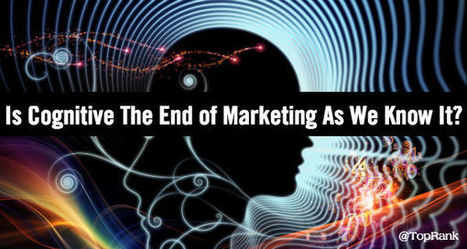




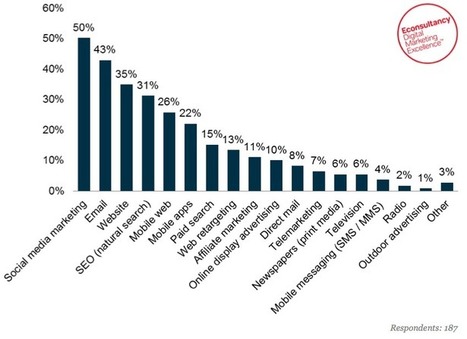














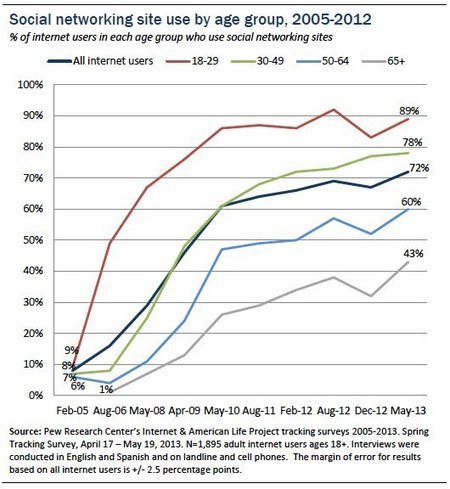

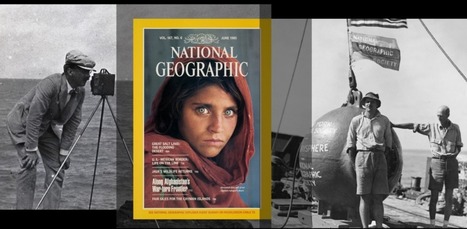
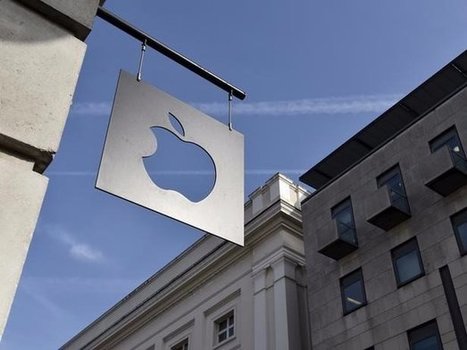




















Mary Meeker’s annual Internet Trends report shows how apps and interfaces leverage data to exploit our weaknesses. A must-read, long read for all. 10/10